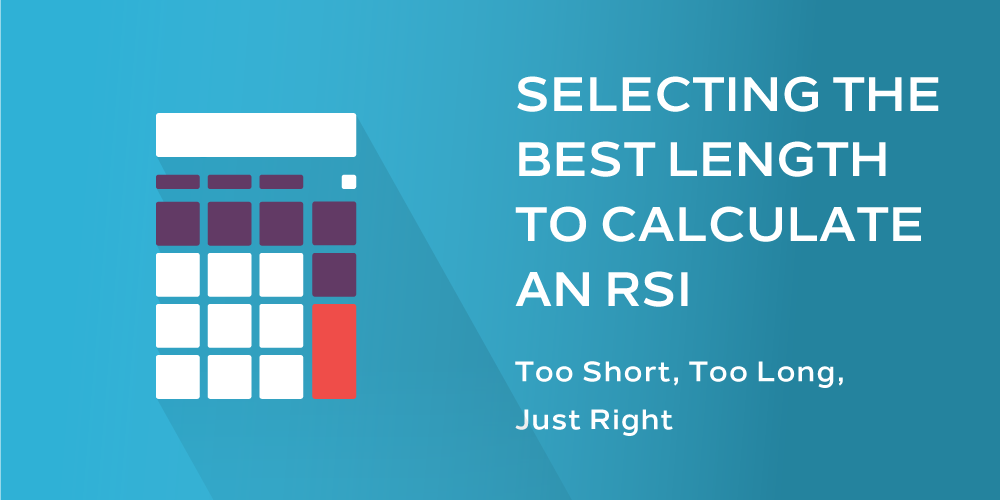
The simple definition of a Relative Strength Index (RSI) indicator is the sum of all the price changes up less the sum of all the price changes down, divided by the absolute value of all the price changes over the calculation length. The indicator resulting from this definition would swing between -1 and +1, with zero as a midpoint.
Suppose the calculation length is a year. Then surely the sum of the price changes up would be nearly the same as the price changes down over that large time span. As a result, that RSI would hover around zero and would not be much of an indicator.On the other hand, suppose the calculation is just two days. In this case, the indicator would be slammed at +1 if the prices went up two days or more in a row and would be slammed at -1 if prices went down two days or more in a row. Since neither of these extreme cases yields optimum results, there must be a way to select the best calculation length for current market conditions.
On the other hand, suppose the calculation is just two days. In this case, the indicator would be slammed at +1 if the prices went up two days or more in a row and would be slammed at -1 if prices went down two days or more in a row. Since neither of these extreme cases yields optimum results, there must be a way to select the best calculation length for current market conditions.
We can start the quest by using a theoretical waveform as a sine wave having a 20 bar period. If we use 10 bars, a half wavelength, to calculate the RSI, then the indicator will just touch +1 and -1 on subsequent alterations. If we use a longer length, the average movements will include both prices up and prices down in the calculation; with the result that the indicator is desensitized and never reaches the upper or lower limits.
On the other hand, if we used a shorter length, say 5 bars, then the indicator would reach the upper limit early and would stay at the upper limits for another 5 bars. So, the indication that too short a length is used in the calculation is saturated at the upper and lower limits.
So, the procedure to set the best calculation length for an RSI is to estimate the dominant cycle period and then use half that period in the calculation. If the RSI is saturated, then increase the calculation length until the saturation is alleviated. If the RSI is desensitized, then decrease the calculation length until the indicator nearly touches its upper and lower bounds. This procedure also works on the conventional RSI that swings between 0 and 100.
For a closer look at how the RSI is calculated as well as how to use it, click here.










